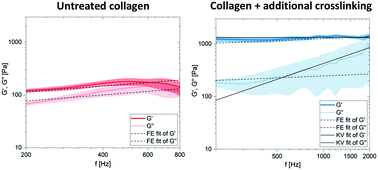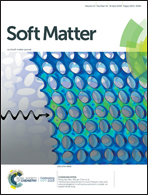Collagen networks determine viscoelastic properties of connective tissues yet do not hinder diffusion of the aqueous solvent
Abstract
Collagen accounts for the major extracellular matrix (ECM) component in many tissues and provides mechanical support for cells. Magnetic Resonance (MR) Imaging, MR based diffusion measurements and MR Elastography (MRE) are considered sensitive to the microstructure of tissues including collagen networks of the ECM. However, little is known whether water diffusion interacts with viscoelastic properties of tissues. This study combines highfield MR based diffusion measurements, novel compact tabletop MRE and confocal microscopy in collagen networks of different cross-linking states (untreated collagen gels versus additional treatment with glutaraldehyde). The consistency of bulk rheology and MRE within a wide dynamic range is demonstrated in heparin gels, a viscoelastic standard for MRE. Additional crosslinking of collagen led to an 8-fold increased storage modulus, a 4-fold increased loss modulus and a significantly decreased power law exponent, describing multi-relaxational behavior, corresponding to a pronounced transition from viscous-soft to elastic-rigid properties. Collagen network changes were not detectable by MR based diffusion measurements and microscopy which are sensitive to the micrometer scale. The MRE-measured shear modulus is sensitive to collagen fiber interactions which take place on the intrafiber level such as fiber stiffness. The insensitivity of MR based diffusion measurements to collagen hydrogels of different cross-linking states alludes that congeneric collagen structures in connective tissues do not hinder extracellular diffusive water transport. Furthermore, the glutaraldehyde induced rigorous changes in viscoelastic properties indicate that intrafibrillar dissipation is the dominant mode of viscous dissipation in collagen-dominated connective tissue.



 Please wait while we load your content...
Please wait while we load your content...